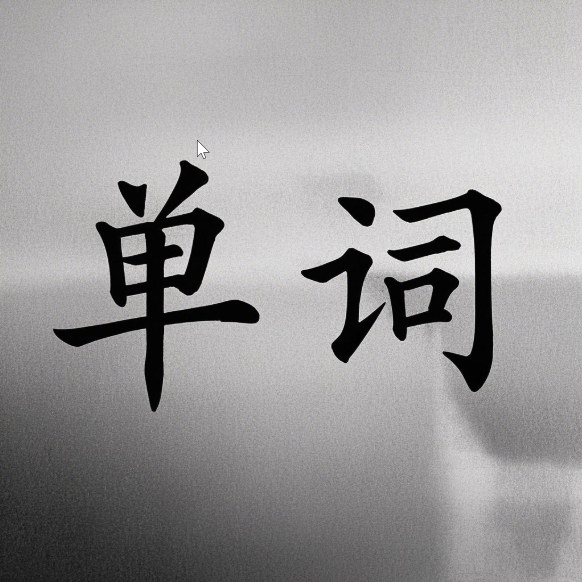uveitis
简明释义
n. 葡萄膜炎,眼色素层炎
英英释义
Uveitis is an inflammation of the uvea, the middle layer of the eye that contains blood vessels and connective tissue. | 葡萄膜炎是指眼睛中层(即葡萄膜)的炎症,该层包含血管和结缔组织。 |
单词用法
前葡萄膜炎 | |
后葡萄膜炎 | |
中间葡萄膜炎 | |
非感染性葡萄膜炎 | |
感染性葡萄膜炎 | |
葡萄膜炎的诊断 | |
葡萄膜炎的症状 | |
葡萄膜炎的管理 | |
葡萄膜炎的原因 | |
葡萄膜炎的治疗选择 |
同义词
反义词
例句
1.Results the incidence of the delayed uveitis after IOL implantation was 3.1%.
结果人工晶状体植入术后迟发性葡萄膜炎的发病率为3.1%。
2.Objective: Our aim was to investigate whether the immune RNA (iRNA) can inhibit the endotoxin induced uveitis (EIU).
目的:探讨特异性免疫核糖核酸(i RNA)对内毒素诱导的大鼠葡萄膜炎(eiu)是否有抑制作用。
3.Therapies for uveitis include drug treatment and surgery.
葡萄膜炎的治疗分为药物治疗和手术治疗。
4.Objective:To investigate treatments of synthetic interleukin 1 blockers on uveitis.
目的:观察人工合成的白介素-1阻断剂对实验性葡萄膜炎的治疗。
5.OBJECTIVE To observe the effect of Chinese herbs on treatment in patients with uveitis and the changes of immune functions.
目的观察中药治疗葡萄膜炎的效果及其对免疫功能的影响。
6.Patients with active ocular inflammation, such as uveitis, may experience an exacerbation of the condition.
伴有诸如葡萄膜炎之类的活动性眼睛炎症的患者则可能发生病情加剧。
7.Objective to study the influence of healthy education to life quality of uveitis patients.
目的探讨健康教育对葡萄膜炎患者生活质量的影响。
8.Objective: To evaluate the effects of Chinese medicine in patients with steroid-dependent anterior uveitis.
目的:观察激素依赖性前葡萄膜炎中医治疗方案的临床疗效。
9.Objective: To evaluate the clinical effects on treating anterior uveitis with traditional Chinese medicine fumigating eyes.
目的:评价联合应用中药熏眼治疗前葡萄膜炎的临床效果。
10.Chronic uveitis (葡萄膜炎) can lead to complications such as glaucoma.
慢性uveitis(葡萄膜炎)可能导致青光眼等并发症。
11.Treatment for uveitis (葡萄膜炎) often includes corticosteroids to reduce inflammation.
治疗uveitis(葡萄膜炎)通常包括使用类固醇以减少炎症。
12.An ophthalmologist recommended regular check-ups for my uveitis (葡萄膜炎) treatment plan.
眼科医生建议我定期检查,以制定我的uveitis(葡萄膜炎)治疗计划。
13.Symptoms of uveitis (葡萄膜炎) may include eye pain and sensitivity to light.
症状包括眼痛和对光敏感,这些都是uveitis(葡萄膜炎)的表现。
14.The patient was diagnosed with uveitis (葡萄膜炎) after experiencing blurred vision.
患者在经历视力模糊后被诊断为uveitis(葡萄膜炎)。
作文
Uveitis is an inflammation of the uvea, which is the middle layer of the eye. This condition can lead to various symptoms such as redness, pain, blurred vision, and sensitivity to light. Understanding uveitis (葡萄膜炎) is crucial for anyone who experiences these symptoms or has a risk of developing eye-related issues. The uvea consists of three parts: the iris, the ciliary body, and the choroid. Each part plays a significant role in the overall function of the eye, including vision and the regulation of light entering the eye. The causes of uveitis (葡萄膜炎) can vary widely. It may result from autoimmune diseases, infections, or exposure to toxic substances. For example, conditions like rheumatoid arthritis or sarcoidosis can trigger this inflammation. In some cases, uveitis (葡萄膜炎) may occur without any identifiable cause, which can make diagnosis and treatment challenging. Diagnosis typically involves a comprehensive eye examination by an ophthalmologist, who will assess the symptoms and may perform additional tests, such as blood tests or imaging studies, to determine the underlying cause of the uveitis (葡萄膜炎). Early diagnosis is essential because if left untreated, uveitis (葡萄膜炎) can lead to severe complications, including glaucoma, cataracts, or even permanent vision loss. Treatment for uveitis (葡萄膜炎) depends on the cause and severity of the inflammation. Common treatments include corticosteroids to reduce inflammation and immunosuppressive drugs for autoimmune-related cases. In some instances, antibiotics or antiviral medications may be necessary if an infection is present. Patients are often monitored closely during treatment to assess the response and adjust medications accordingly. Living with uveitis (葡萄膜炎) can be challenging, as it may require ongoing medical care and lifestyle adjustments. Patients are encouraged to maintain regular follow-up appointments with their eye care specialists to monitor their condition and manage any potential complications effectively. Additionally, educating oneself about the condition can empower patients to take an active role in their treatment and recovery. In conclusion, uveitis (葡萄膜炎) is a serious eye condition that requires prompt attention and treatment. Understanding its symptoms, causes, and treatment options can significantly impact a patient's quality of life. By seeking early intervention and adhering to prescribed treatments, individuals can manage uveitis (葡萄膜炎) and protect their vision for the future. Awareness and education about this condition are vital, not only for those affected but also for healthcare providers to ensure the best possible outcomes for patients.
